NOVEMBER 18, 2022 : We woke up to an overcast sky in Arachova. Our hostess provided us with a breakfast basket on our doorstep that included a still-warm home-baked lemon cake, which she insisted we take with us. Delicious. After breakfast, we drove through the town, stopping quickly at the places the rain prevented us from seeing the evening before.
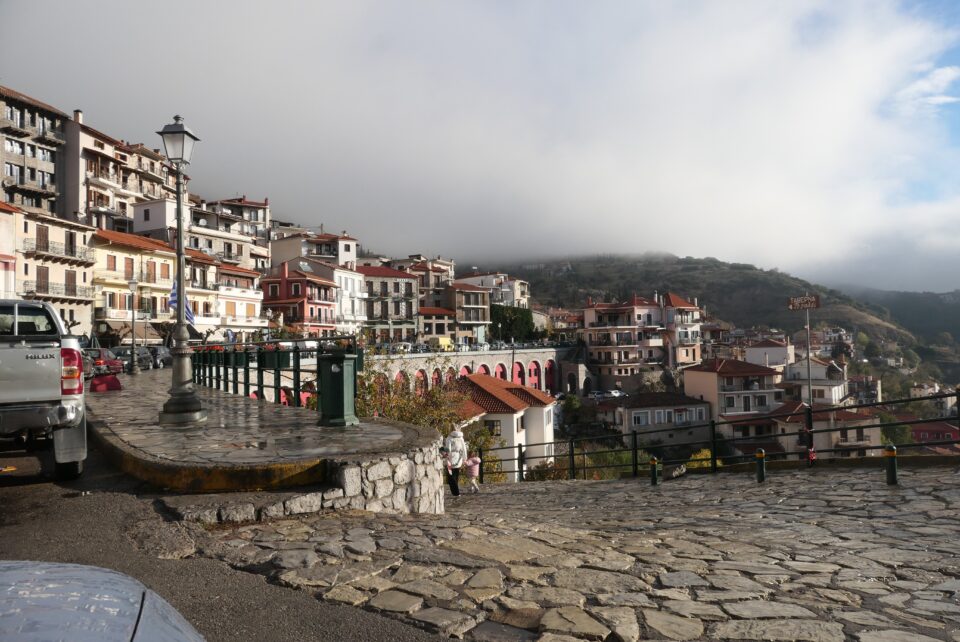


From Arachova, we drove through the mountains towards our first destination, the town of Chalcis. It seemed that in Greece we were always driving in the mountains or next to mountains. This happened because Greece is one of the most mountainous countries in Europe, with 80% of its landmass covered by mountains. Historically, the mountains isolated Greeks from one another, which caused Greece to develop independent city-states, instead of a united Greece with one government.
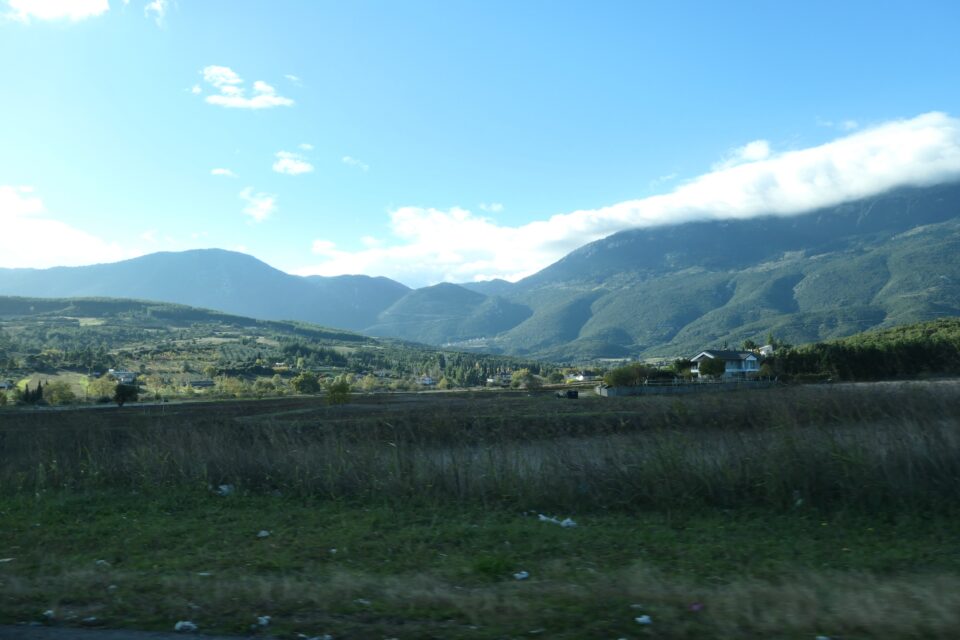
Chalcis, also known as Chalkis, Chalkida, or Halkida is the main city on the island of Euboea (also known as Evia or Evoia,) which lies about one hour’s drive northeast of Athens. Euboaea is the 2nd largest Greek island (Crete is the first). In Chalcis, we had several sites to visit – a synagogue, a cemetery and two memorials for Colonel Mordechai Frizis.
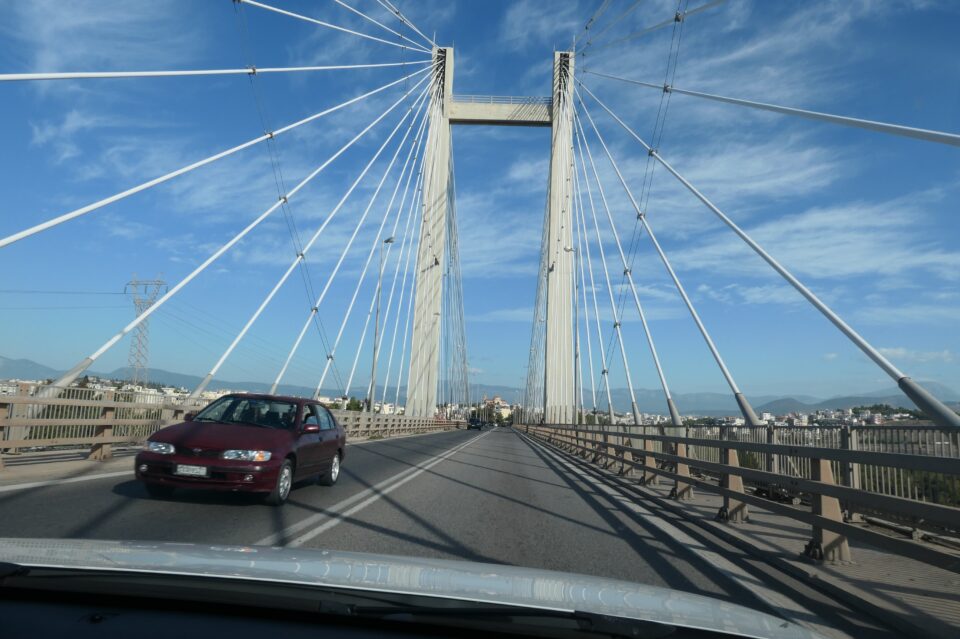
The Jewish community of Chalcis has lived uninterrupted in the town for 2500 years. Joseph Flavius mentions the presence of Jews in this Greek city over 2000 years ago. They were a Romaniote community, mostly isolated from Jewish communities on the mainland. Unlike elsewhere in Greece, after the expulsion from Spain, the Sephardim did not go to Chalcis, and the community remained only Greek-speaking Romaniote Jews.
When the Germans arrived, the Jews of Chalcis were protected by the partisans of the Greek resistance who hid them in villages in the mountains. The Metropolitan Bishop Grigorios also helped to find safe houses for the Jews in Christian homes while hiding the religious items from the synagogue in his church. Of the 325 Jew living in Chalcis, only 22 perished in the Holocaust.
Today a small number of Jews still live in the city. Like in Volos, the synagogue holds Friday evening services followed by a communal meal.
Our first stop in Chalcis was the Jewish cemetery, the site located the farthest from the center of town. We reached the destination that Google Maps navigated us to, and in front of the wall of the cemetery was a large Holocaust Memorial. To the right of the memorial sits a bust of Metropolitan Bishop Grigorios and on the left is a bust of Colonel Mordechai Frizis.
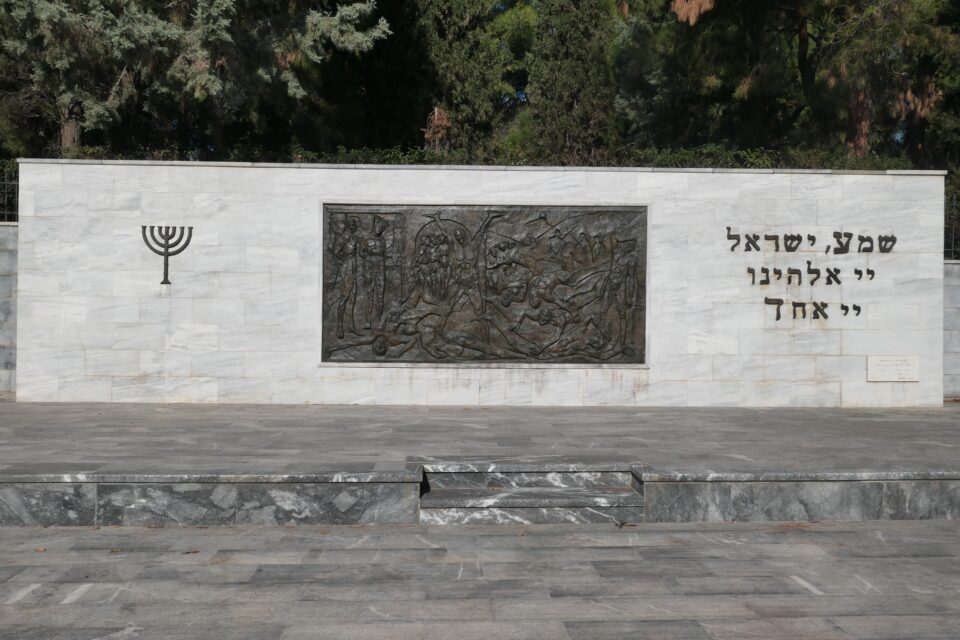
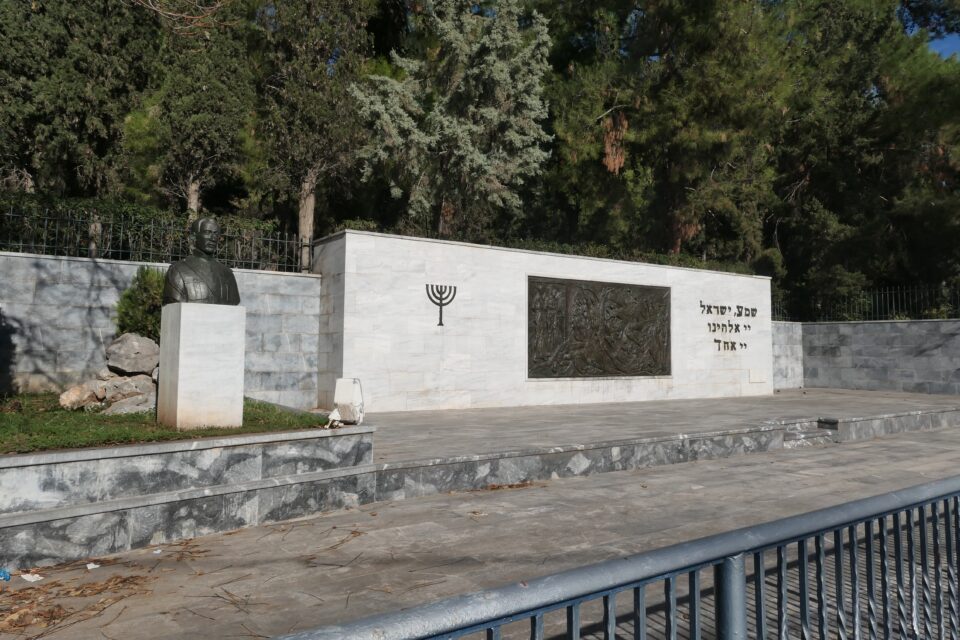

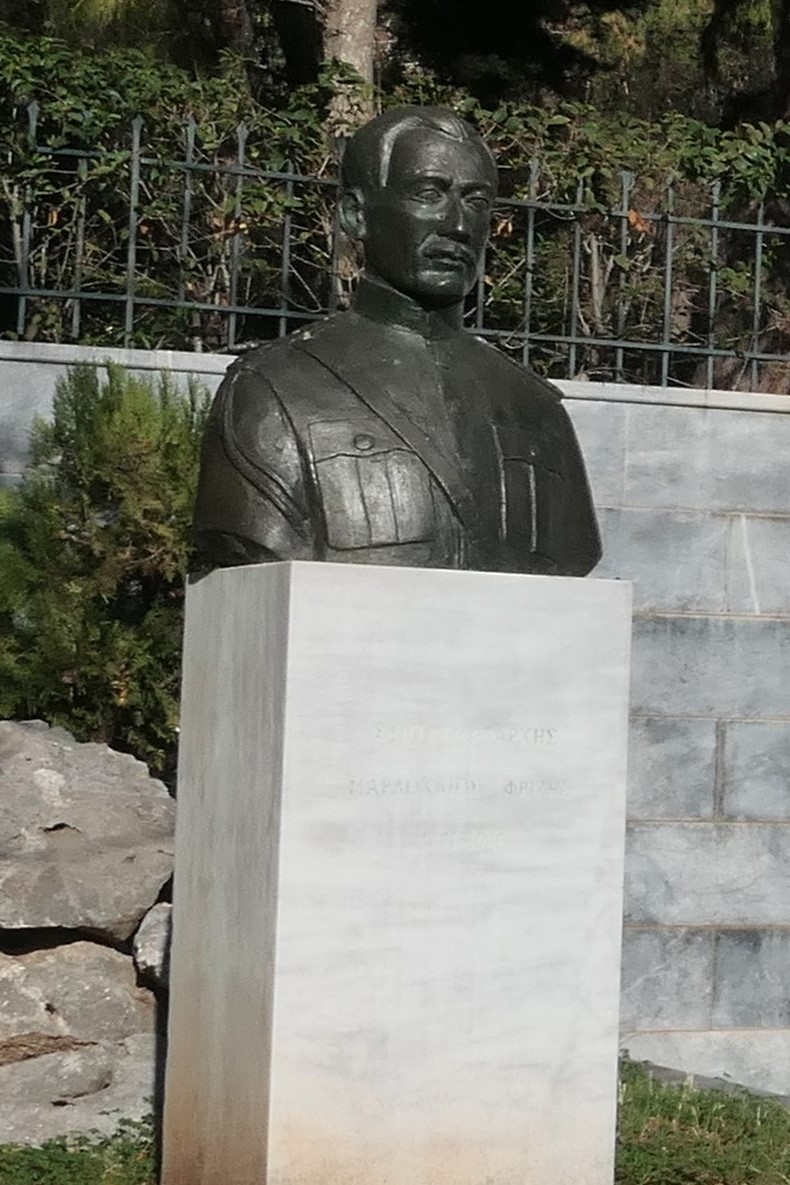

Colonel Mordechai Frizis was the first Greek senior officer to die in WWII. He was born in Chalcis in 1893 to Romaniote Jewish parents and is remembered as a local hero. In addition to the bust near the holocaust memorial, we would visit two additional sites in Chalcis that pay tribute to him.
Behind the Holocaust Memorial was the wall of the cemetery, but we did not see an entrance. It is a large cemetery (17 acres), and we decided we would drive along the wall until we found the gate. Unfortunately, the roads did not follow the wall, and from the sections of the wall we saw, there was no opening. It was Friday, and we were in a hurry to get to Athens, so we decided to continue to our next stop.
We easily found the synagogue in the center of town. It is a renovated building sitting on a busy street in a commercial area. On the internet, we did not find any contact information for whom to call and ask to visit the synagogue. We rang the bell and hoped someone would answer. No luck – we would not get to see inside the synagogue.
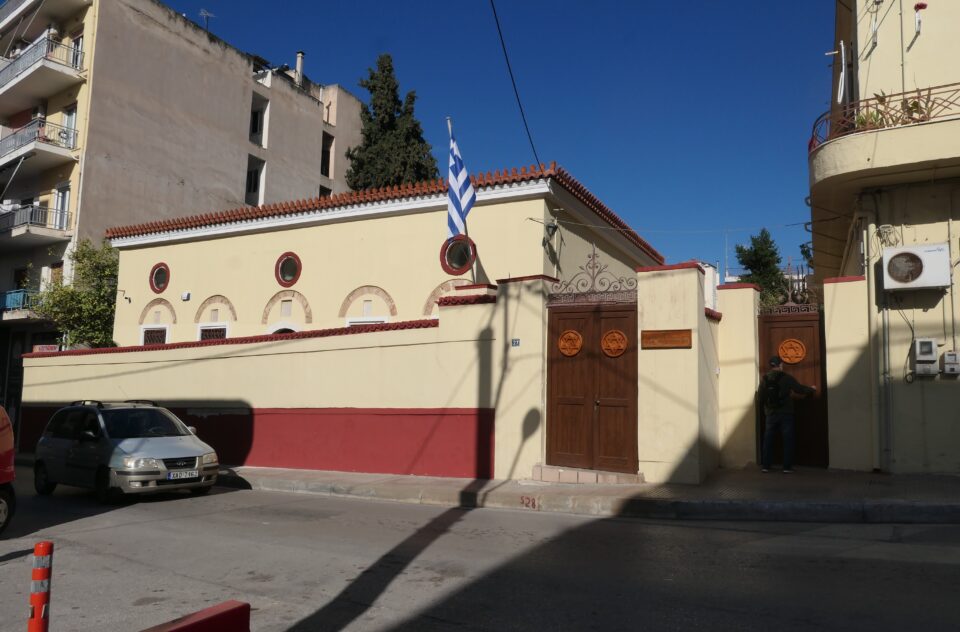
From there, it was a short walk to Immortal Plaza. This is a small square on the Chalcis waterfront with several busts of local heroes, including a bust of Colonel Mordechai Frizis.
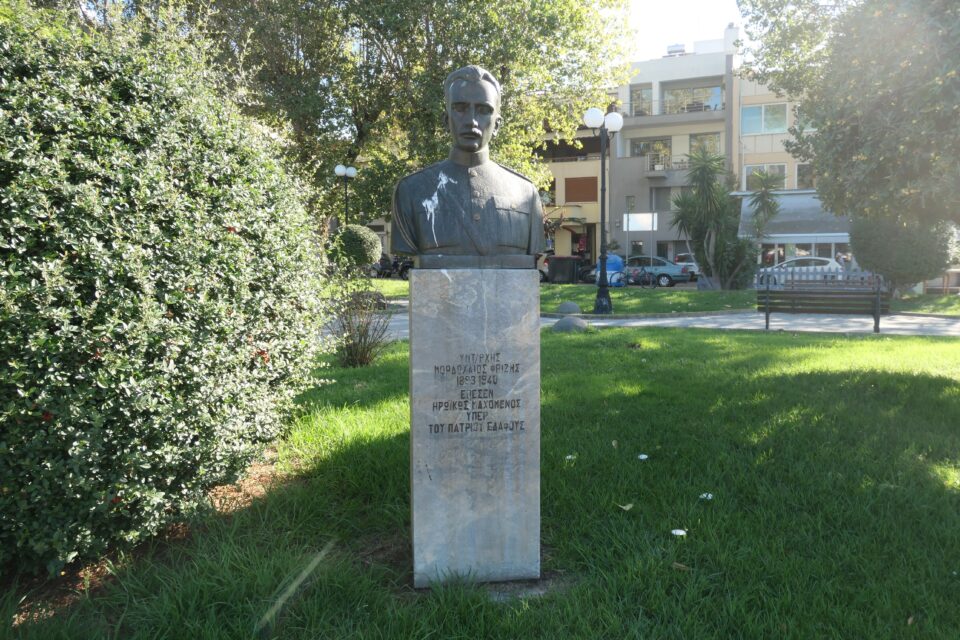
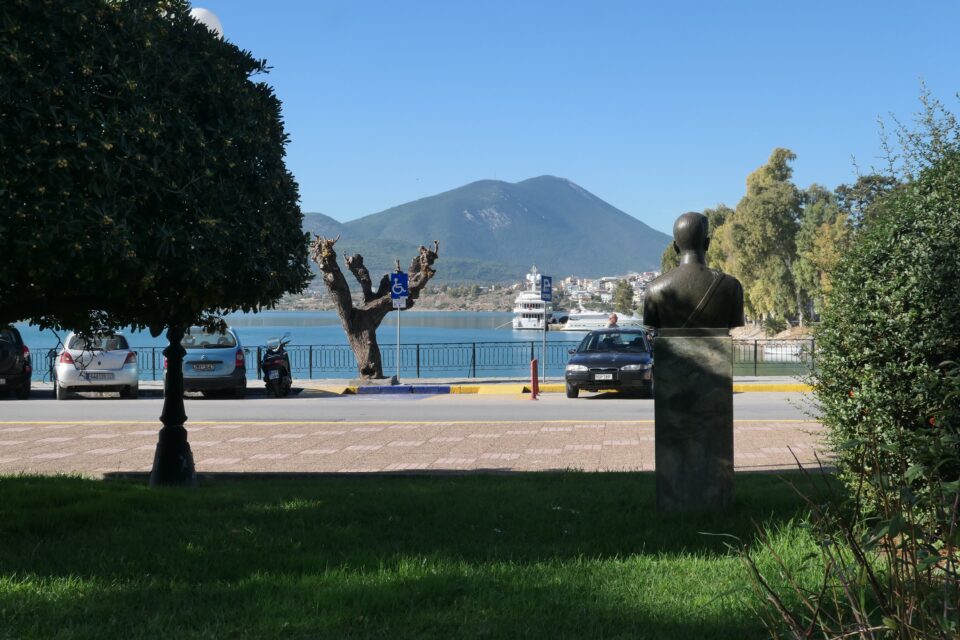
We continued onward to Frizis street, the site of a large statue of Colonel Mordechai Frizis. He is riding a horse and the horse has two legs in the air. It is a loosely held convention, that if the statue shows the horse posed with both front hooves up in the air, the rider died in battle. If the horse is posed with one front leg up, it means the rider was wounded in battle or died of battle wounds.
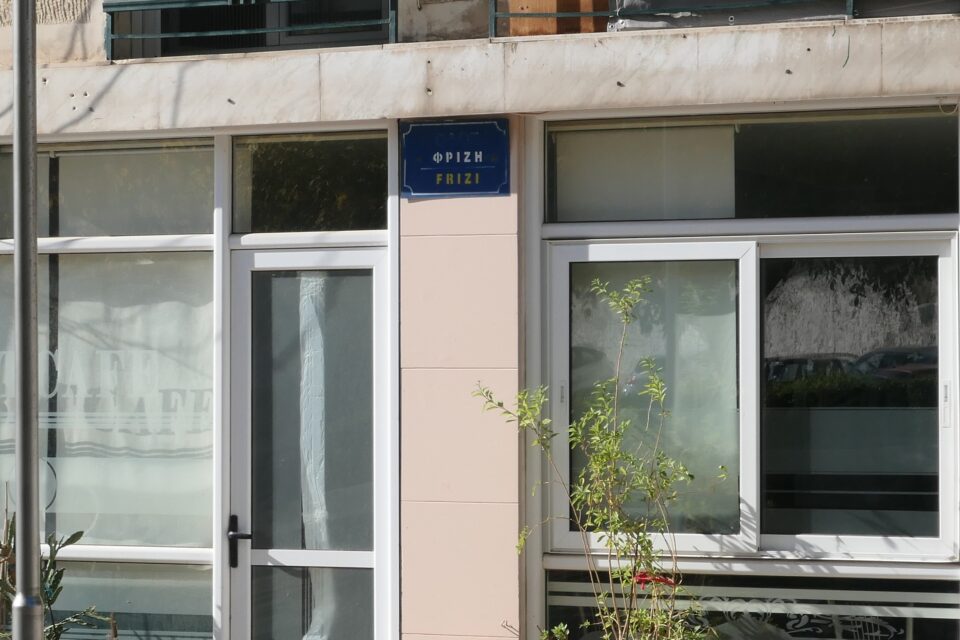

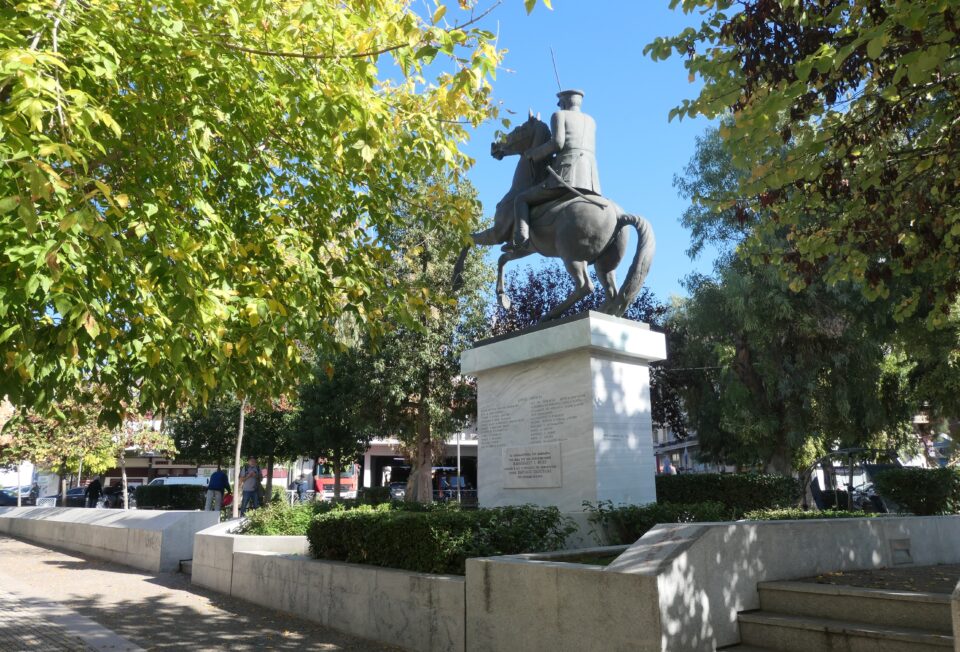
It had taken us less time to find the sites than we had planned, so we decided to return to the Jewish cemetery. We dropped a pin on Google Maps on the side of the cemetery we had not yet seen. When we arrived there, the entrance gate was directly in front of us. It was locked, as usual.
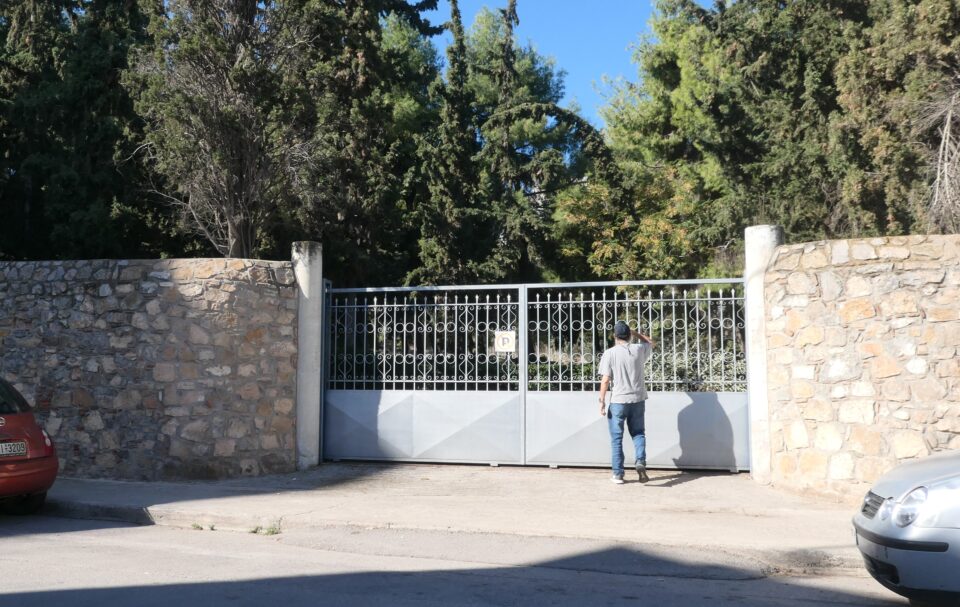
We approached the gate and heard the loud sound of a jigsaw cutting trees inside. Someone was there. We knocked, we yelled hello, hello and eventually someone came to the gate but he spoke no English. He signaled us to wait and disappeared. We waited and waited and thought to leave, but after a while he returned with his English-speaking teenage son. The son explained that without the permission of the president of the Jewish Community we could not enter. His father, the cemetery caretaker, was calling to get permission but no one was answering the phone. The son left, and we were about to give up, when the father calls again, reaches someone, and has a long shouting conversation in Greek. We did not understand what was going on, but we got the impression that he was not happy. As he turned around to go away, I said to Mark it does not look promising. The caretaker then stopped, made a gesture like “what the hell” and came back and let us in. We were not sure he had official permission to do so, so we stayed just a few minutes, took some photos, thanked him and left.

The reason we really wanted to see this cemetery is because it is one of the most important and historic Jewish cemeteries in Greece as it contains graves dating from the Ottoman period (15th century). These tombs looked like nothing we had seen before – they are built with a vaulted construction.

Only several days later did I realize I had photographed the ancient graves only from the back. I found this photo of the internet of what they look like in the other direction.
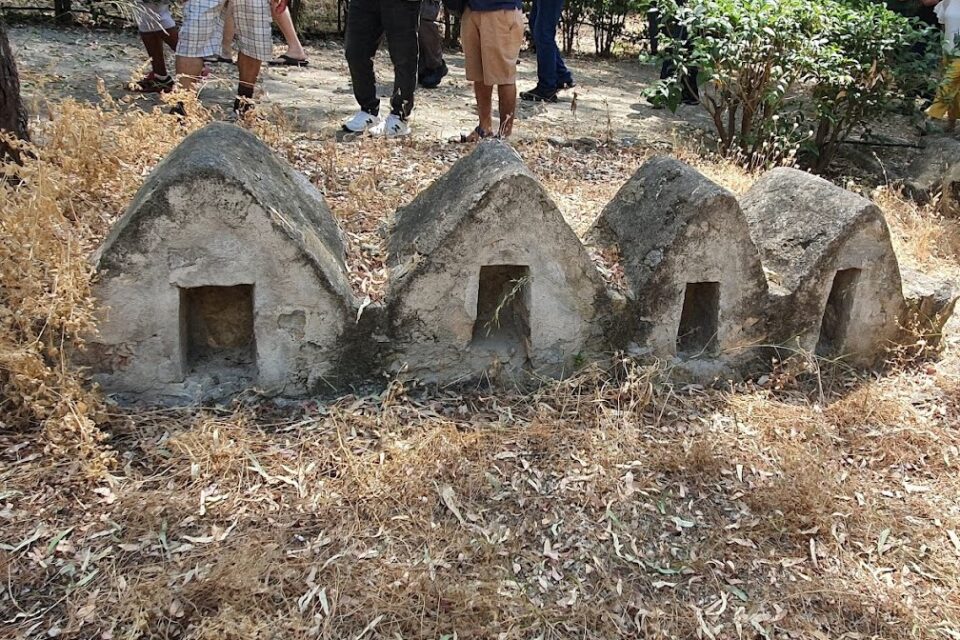
We then drove to Athens and found our apartment in the Psirri neighborhood, also known as Psyri, Psiri or Psyrri. This is one of the oldest neighborhoods in Athens and until about 20 years ago, it had a bad reputation. In the past years, it has become a trendy choice. Our building was on a very narrow street, full of small, interesting stores – we were in the middle of a marketplace. The building was old and graffiti-covered, but the inside had been recently renovated and we were staying in a beautiful, sunny modern studio overlooking the garden of a neighborhood church. The outside did not match the inside.
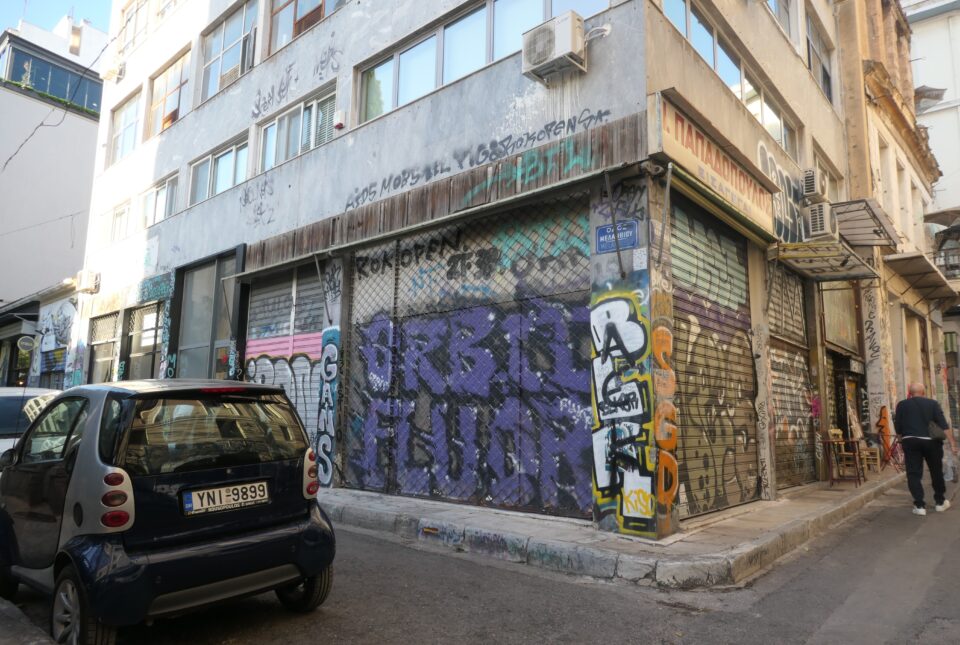
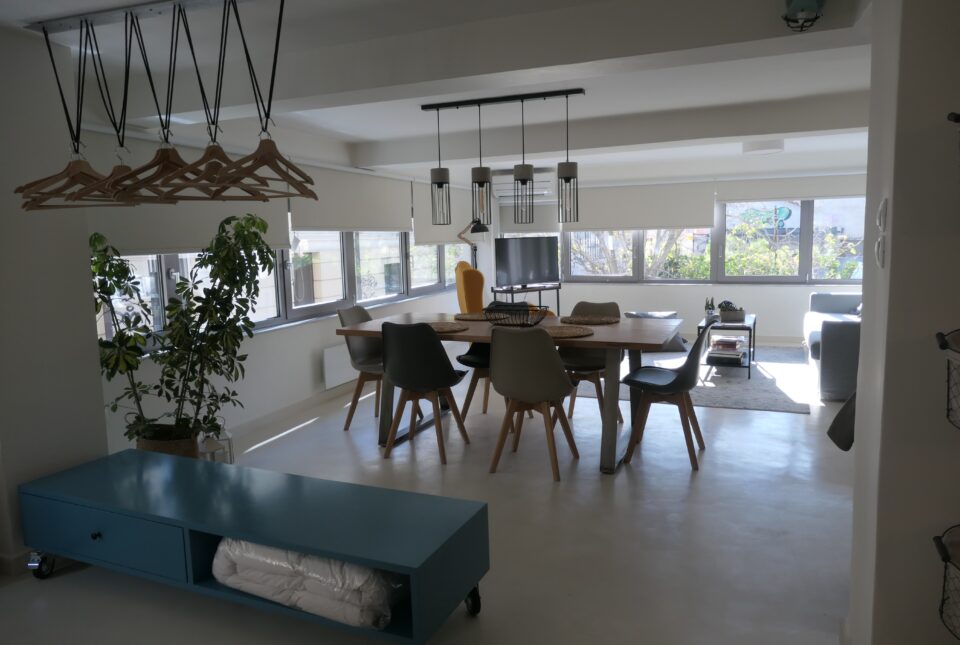
We needed to return our car to Avis, which was located less than two kilometers away as the bird flies. However, between us and Avis was one large pedestrian zone. It took us almost a half hour to circumvent the inner city – lots of traffic, lots of people, and many, many motorcycles. We reached Avis with a sigh of relief – we had driven 2153 kilometers throughout Greece and had not scratched the car.
From Avis, we walked back to our apartment. First impressions of the city were very favorable. There were many small, twisting streets to explore. Much of the city seemed redone. Lots of interesting stores and many, many restaurants. There were people everywhere – very vibrant.
Athens also has several vegan restaurants. We selected one that was on our way home, picked up meals for tonight and tomorrow, then reached the apartment and prepared for Shabbat. Looking forward to exploring more of Athens in the coming days.
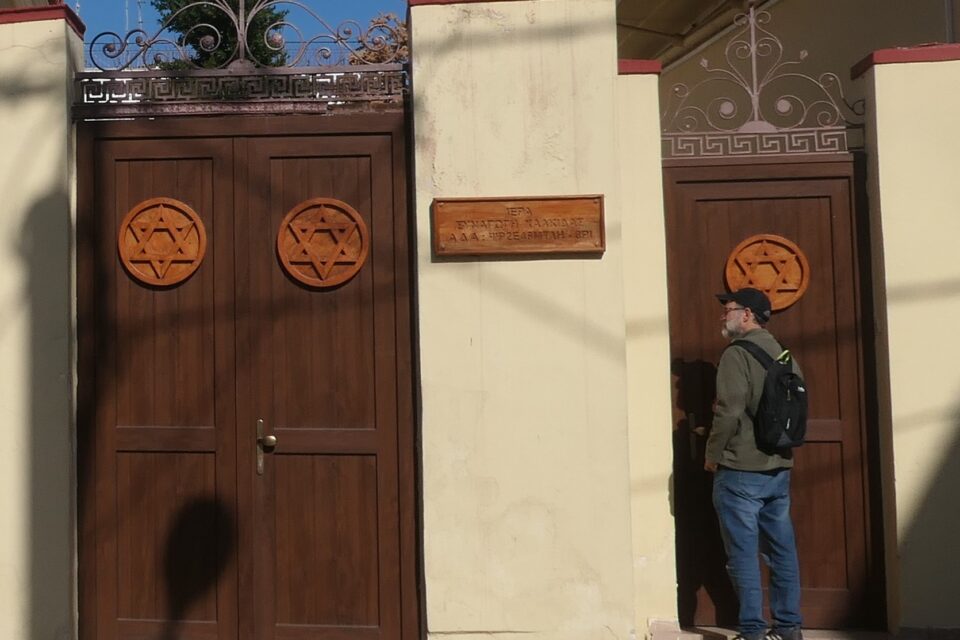
Interesting blog, as usual. Have a safe flight back.